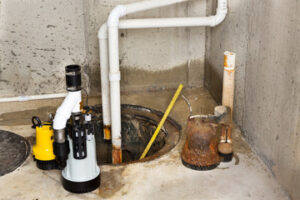Grease traps prevent solid grease and oil from entering sewer lines and causing sanitary sewer overflows (SSOs). Regularly cleaning and pumping grease traps helps to keep them working properly.
Professional Grease Trap Servicing technicians are the best way to clean and service your restaurant’s grease interceptor. They also dispose of the waste correctly and ensure that you comply with city regulations.
What is a grease trap?
A grease trap is a system that keeps fats, oils, and grease (FOG) out of sewer lines, where they can cause blockages that disrupt business and lead to expensive repairs. It also helps limit water pollution by keeping FOG from washing into municipal wastewater treatment systems, where it can damage pump stations and cause overflows.
Grease traps come in two forms, manual and automatic. Both work similarly by cooling wastewater and separating it into 3 layers. The FOG rises to the top of the trap and is trapped using a series of baffles, while solids settle at the bottom, and the separated clear water exits through an outlet baffle.
Most cities require restaurants to have their grease traps regularly inspected and pumped. Inspectors typically measure the depth of the top FOG layer and the settled sludge layer to ensure that they are within regulatory limits. They may also check the grease trap for signs of clogging or other problems. In some cases, the city may require grease trap cleaning on a set schedule, such as every 14 days or 90 days.
Getting your grease trap serviced on a regular basis is the best way to prevent blockages and other problems. A professional can pump out your grease trap and dispose of it properly, ensuring that the grease is removed from your restaurant’s drain lines.
If you are considering installing a grease trap, you should consult with a local plumber or licensed contractor to ensure that it is installed correctly and meets all local regulations. A professional can also help you choose the right size grease trap for your establishment and provide you with tips to reduce the cost of maintenance.
A properly maintained grease trap can protect your kitchen and the plumbing in your entire building. If you are not having your grease trap cleaned on a regular basis, it can lead to major blockages and costly repairs. To avoid these issues, it is important to hire a professional company to clean your grease trap on a regular basis. The company will inspect your grease trap and then pump out and dispose of the grease in accordance with all local regulations.
Why do you need a grease trap?
Having a grease trap isn’t just an option for restaurants and food service companies; it’s required by many municipalities and local codes. Purchasing the right size grease trap, along with properly maintaining it and following all health code regulations, will help you stay in compliance and avoid costly fines.
In addition, a well-maintained grease trap will keep fats, oils and grease (FOG) from entering the sewer system, where they could cause blockages and back ups. This helps protect the integrity of municipal and county sewage systems, as well as keeps businesses running strong by avoiding potential fines and even shutdowns.
Grease traps are also an important safety measure for restaurant customers. A clogged grease trap can produce an unpleasant odor that will waft into the dining area, making diners uncomfortable and potentially turning them away. And a back-up in the kitchen’s drain line can cause a messy and dangerous situation for workers who are trying to prepare food for guests.
Regular grease trap maintenance and cleaning is necessary to ensure that the device is functioning properly, and that a company can maintain proper sanitary practices in its kitchen. It’s important for employees to know the signs that a trap is overdue for cleaning so they can notify their commercial plumbing service as soon as possible.
If employees wait until a trap is completely full, there is a high risk of a blockage in the incoming or outgoing lines. This can lead to a number of problems, from an overflowing sink to an entire building clogged with greasy water and foul odors.
A professional grease trap service can help prevent these issues by ensuring that the device is clean and working as it should. They will vacuum the trap and remove any solidified grease, then use soap and water to clean the inside of the trap, including the lid and sides. And they’ll dispose of the grease in a safe and environmentally responsible manner. Although it is possible to clean a grease trap yourself, using a professional can save time, money and hassle.
How do you clean a grease trap?
A grease trap must be cleaned regularly to keep it functioning properly. It also protects your restaurant from costly plumbing backups during mealtimes that can drive away customers. Performing a thorough cleaning every 90 days helps minimize foul odors, prevent the trap from overflowing onto your property or into the street, and ensures that the trapped FOG is disposed of according to regulations.
The first step is to remove the grease trap lid and set it aside. Then, use a stick or dowel to measure the waste in the trap. Record these results in a FOG pump out report.
Next, carefully use a scraper to remove all solidified fats, oils, and grease from the lids, sides, and baffles of the trap. It is a good idea to wear rubber gloves during this process. Once the majority of the waste has been removed, rinse the trap with water to remove any remaining soapy residue.
Many restaurants try to cut costs by skipping grease trap cleaning services or trying to do it themselves, but this can lead to disastrous consequences. The best approach is to enlist the services of an experienced professional, such as Mahoney Environmental. Not only will their skilled technicians perform a thorough trap cleaning and repair, they can also offer helpful tips to keep the grease trap in good condition between services.
A qualified professional can also help you stay in compliance with your city’s laws and regulations regarding grease trap cleaning and disposal. They will ensure that the grease is disposed of correctly and on schedule, as well as provide you with reports to show that your trap is being maintained regularly.
Another important step is line jetting, a service that uses high-pressure water to clean out your trap. This service can clear out stubborn, built-up FOG in the plumbing lines, keeping the grease trap clean and functioning properly. It’s a good idea to have your vendor take a photo of the plumbing before and after this service, as this can help you spot issues in the future and avoid expensive, time-consuming repairs.
How often should you clean a grease trap?
Whether you run a restaurant, bakery, cafe, or another type of food service establishment, you need to have your grease trap cleaned regularly. It is a legal requirement in many areas and failure to comply with local regulations can result in costly fines. Grease trap cleanings also help to keep your kitchen area sanitary and safe. Grease and oil buildup in the trap can cause unpleasant odors, as well as clogs that will spill into water or sewage lines. Regular grease trap cleanings prevent these issues and ensure that your business complies with all local regulations.
How often your grease trap needs to be cleaned depends on how much FOG (fats, oils, and grease) you produce and how large your trap is. A good rule of thumb is to have the trap drained when it reaches a quarter full. This will prevent foul odors from developing in the trap and ensure that it remains effective. Many municipalities require businesses to have their traps drained and cleaned on a specific schedule, so it is important to know the exact requirements for your region.
A dirty trap will become less efficient over time, and this can cause problems for the rest of your building’s plumbing system. The FOG will then find other ways to escape the trap, including through the drains in sinks and dishwashers. This can lead to blockages and other costly problems. To avoid this, have your trap drained on a regular basis and make sure that the baffles are clean.
The best way to ensure that your grease trap is cleaned regularly is to have a professional company handle it for you. These companies use high-end equipment to pump the grease out of the trap and dispose of it properly. They will also inspect the trap and provide you with a report of its condition. If you do decide to clean your trap yourself, be sure to follow all the necessary safety precautions. It is also a good idea to wear a mask when handling the grease, as it can be quite stinky.






